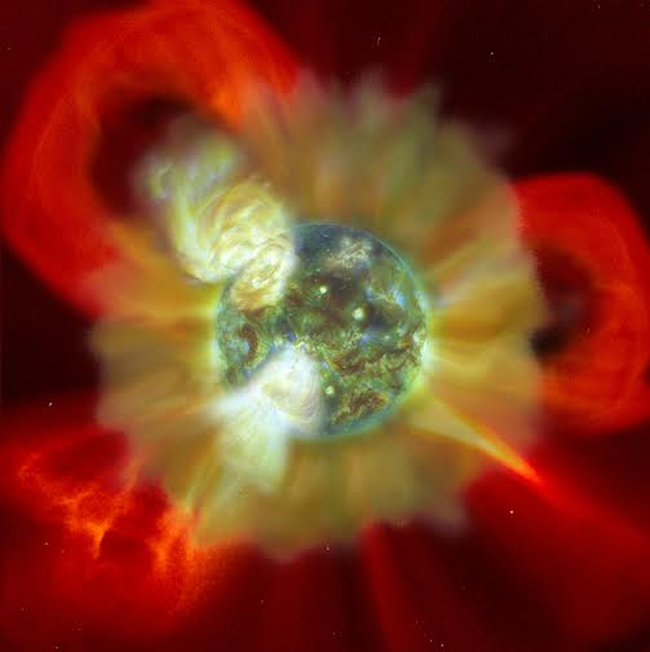
 Credit: NASA/Vladimir Airapetian
Credit: NASA/Vladimir Airapetian
Rambunctious Young Sun
The sun presents a friendly face as it rises in the morning after a long winter, providing a stable, welcome source of light and heat. But at times of high solar activity, the sun experiences strong outbursts of energy. These solar flares, driven by the sun's magnetic field, result in enormous outpourings of dangerous energetic particles and high-energy radiation. Earth is largely shielded from these solar flares by its magnetic field and atmosphere. Young stars, however, are even more active than the present-day, middle-aged sun. Incredibly precise observations of the brightness of stars in the constellation of Cygnus by the Kepler spacecraft show that many young, solar-type stars show frequent "superflares", 10,000 times more powerful than the most powerful solar flare ever seen. Astronomers believe that the young sun probably showed similar levels of extreme solar storms, and it's likely, early on, that the earth was hit by a powerful solar flare at least once per day, over the course of half an eon. A new computer model considers how such extreme solar weather would have effected the young earth. These calculations show that intense solar superflares would have had profound effects on the early earth, collapsing the earth's magnetic field, sparking huge electrical currents and super-aurorae, bathing earth's atmosphere and possibly even its surface with dangerous high-energy subatomic particles. This may have provided a dangerous environment for life on the early earth; though, paradoxically, this solar bombardment may have helped promote the chemical reactions that helped life arise in the first place.
Published: March 16, 2015
<
HEA Dictionary ● Archive
● Search HEAPOW
● Other Languages
● HEAPOW on Facebook
● Download all Images
● Education ● HEAD
>

Each week the HEASARC
brings you new, exciting and beautiful images from X-ray and Gamma ray
astronomy. Check back each week and be sure to check out the HEAPOW archive!
Page Author: Dr. Michael F. Corcoran
Last modified Tuesday, 27-Feb-2024 10:08:22 EST


